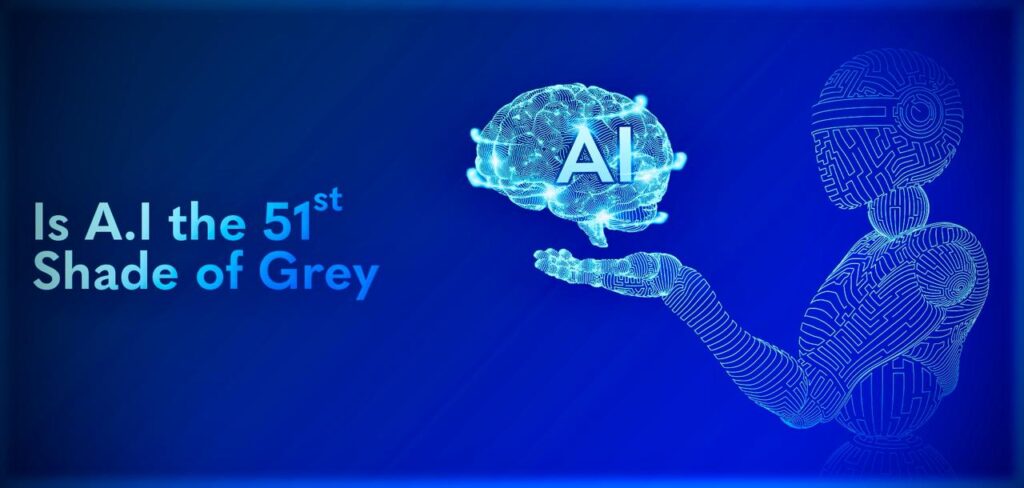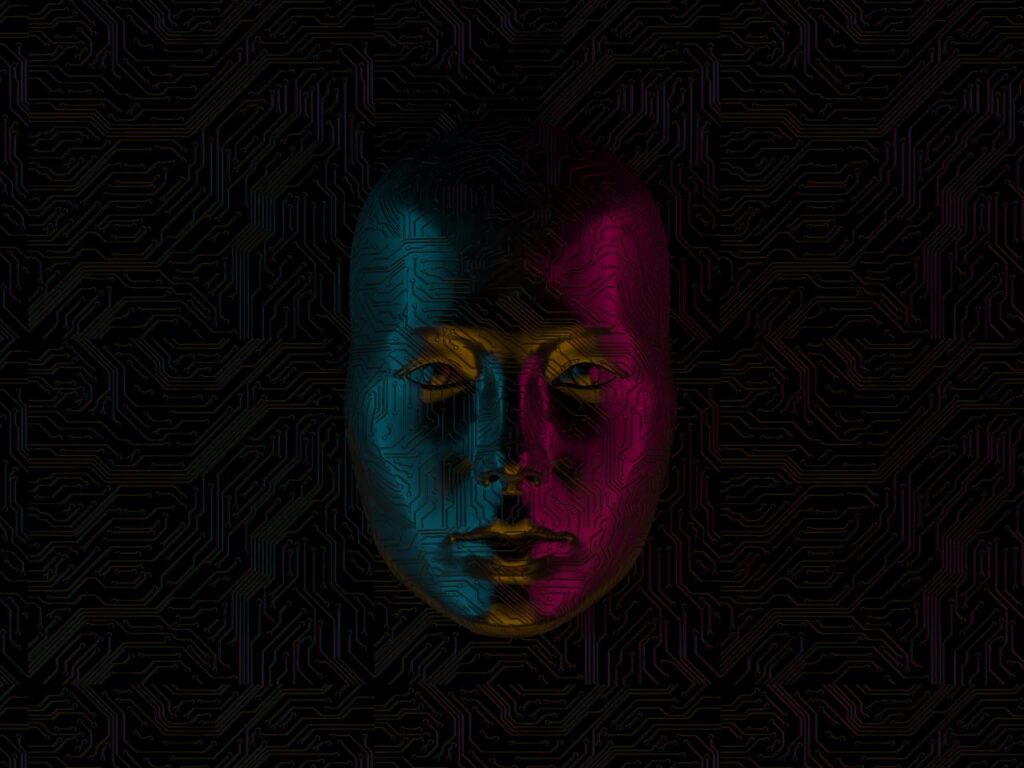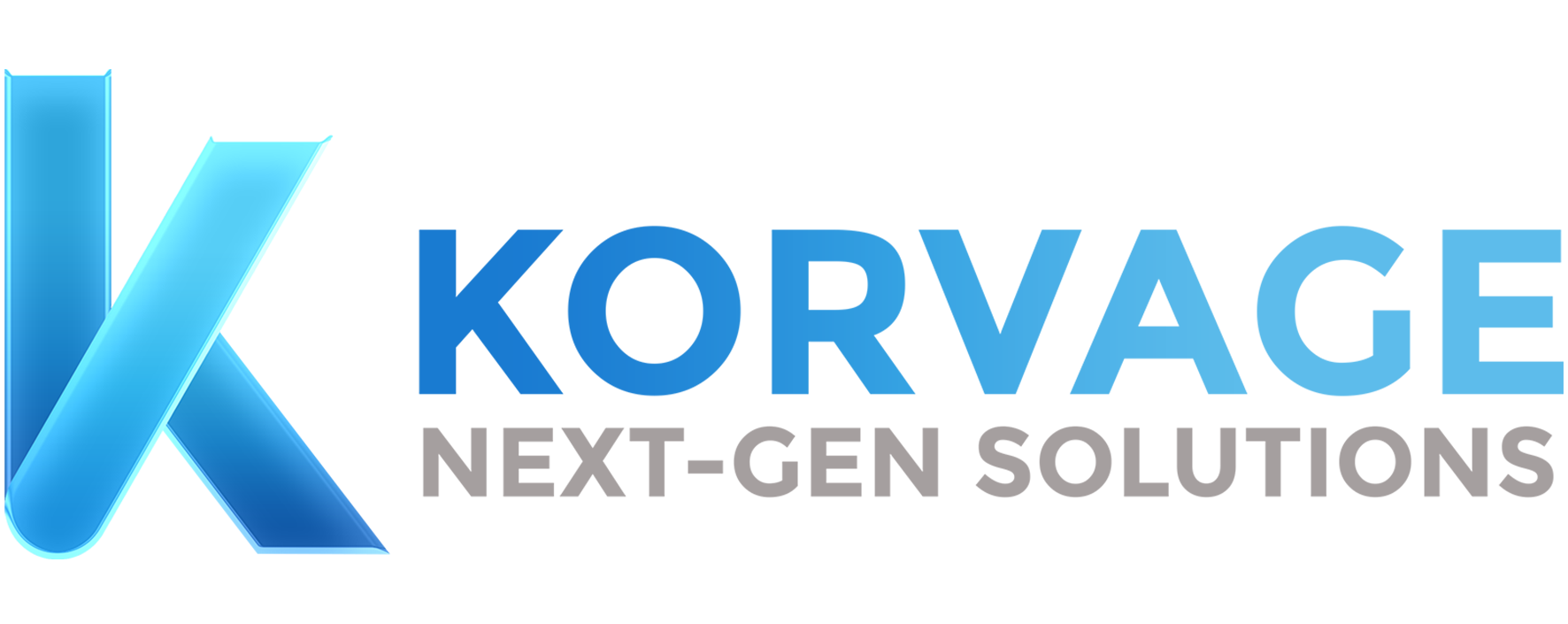Is Artificial Intelligence the 51st Shade of Grey?

The “51st Shade of Grey” analogy lies in the inherent power dynamics at play. Just as Anastasia Steele navigates the complex dance of submission and control with Christian Grey, humans find themselves in a similar position with AI. We create, train, and utilize artificial intelligence just to administer a degree of control over their actions and outputs. Yet, as AI capabilities evolve, the lines between creator and creation begin to blur. Can we truly control something that learns and adapts at an exponential rate? Is there a risk of being seduced by the power and convenience offered by machine intelligence, only to face unforeseen consequences later?
However, this comparison also falls short of capturing the multifaceted nature of human vs machine intelligence interaction. Unlike the isolated, emotionally charged dynamic in “50 Shades of Grey,” our relationship with the technology is far more diverse and collaborative. AI is not a singular entity; it encompasses a vast array of tools and technologies, each with its purpose and potential impact. From the algorithms that personalize our online experiences to the robots that automate tasks in factories, AI has invaded our lives in subtle and profound ways.
What Is Artificial Intelligence ( AI )?
Artificial intelligence (AI), a term once relegated to science fiction, now has become a part of our daily lives, shaping the way we work, interact, and even think. From the algorithms powering our social media feeds to the self-driving cars revolutionizing transportation, its impact is undeniable. But beneath its universal presence lies a complex and fascinating world, filled with potential and challenges.
At its core, AI aims to replicate human intelligence by employing algorithms and advanced computing power. It’s not about creating machines that can think exactly like humans, but rather about developing systems that can perform tasks traditionally requiring human intelligence, such as problem-solving, learning from experience, and adapting to new situations.
Darker Side of Artificial Intelligence –

1. Opacity and Bias – Much like the hidden motivations in the novel, the inner workings of complex AI algorithms can be cloudy. This lack of transparency raises concerns about bias, discrimination, and the potential for manipulation. Imagine an AI-powered hiring system that unknowingly perpetuates existing societal biases, disadvantaging certain groups.
2. Job Displacement – The automation wave led by machine intelligence would threaten to render many jobs obsolete, sparking fears of mass unemployment and social unrest. While new opportunities may arise, the transition will be filled with challenges. The ethical responsibility to tackle these disruptions lies heavily on developers, policymakers, and society at large.
3. Existential Threats – Some, like the late physicist Stephen Hawking, warned of the potential for AI surpassing human intelligence and posing an existential threat. While this might be a distant future scenario, it highlights the need for responsible development and safeguards to ensure AI serves humanity, not the other way around.
However, to equate AI solely with these ethical dilemmas would be similar to painting a one-dimensional picture. The potential for good is undeniable. Imagine AI-powered diagnostics that can detect diseases earlier, or personalised learning systems that cater to individual needs will foster a brighter future for all.
Rewards Associated With the Usage of AI –
1. Improves Human Potential: AI is a powerful tool to increase human capabilities. Imagine teachers with personalized learning experiences with AI-driven recommendations, or scientists accelerating research with AI’s ability to analyze vast datasets. These are just a glimpse into how AI can empower individuals and drive progress across various fields.
2. Efficiency and Optimization: AI excels at automating repetitive tasks, freeing up human resources for higher-level thinking and innovation. Imagine factories operating at peak efficiency with AI-driven logistics, businesses optimizing marketing campaigns with AI-powered insights, or entire industries streamlining operations with AI-powered automation. These are just a few examples of how AI can optimize processes and provide significant gains.
3. Tackling Global Challenges: AI has the potential to be a powerful force for good in addressing some of humanity’s most pressing challenges. From combating climate change with AI-driven solutions for renewable energy to developing life-saving medical treatments with AI-powered drug discovery, the possibilities are vast. By using AI responsibly, we can pave the way towards a more sustainable and prosperous future.
4. Creativity and Innovation: While often associated with automation and efficiency, AI can also be a source of motivation for creativity. AI-powered tools can generate new ideas, explore vast design spaces, and even compose music or write poetry. Using AI, humans can push the boundaries of creativity and innovation in ways never before imagined.
5. Personalized Experiences: AI has the potential to personalize our lives in many ways. Imagine educational experiences personalized with individual learning styles, healthcare recommendations based on unique genetic profiles, or even entertainment curated to our specific preferences. By understanding our individual needs and desires, AI can enhance our lives in unimaginable ways.
How To Ensure the Responsible Use of AI?
According to a research, ChatGPT one of the most famous and used AI tool worldwide receives nearly 1.8 billion visits per month. Certainly, Artificial Intelligence has immense potential & It can make things a lot much easier if used “ carefully “. However, to make sure it does not turn to be a curse for humanity here are some crucial steps which are needed to be followed –
- Transparency – It’s crucial to explain AI algorithms clearly and help the public understand them better.
- Inclusive Development – Ensuring diverse perspectives and voices are involved in AI development can reduce bias.
- Human-Centred Design – AI should be designed to strengthen and empower humans, not to replace them.
- Regulation and Oversight – Robust regulations and ethical guidelines are needed to govern AI development and deployment.
Conclusion –
The comparison is apt. AI, like the novel’s central character, possesses immense power and potential for good. It can revolutionize healthcare, combat climate change, and optimize countless processes. However, just as the novel explores the darker aspects of human desire, AI too presents ethical dilemmas that demand careful consideration.
